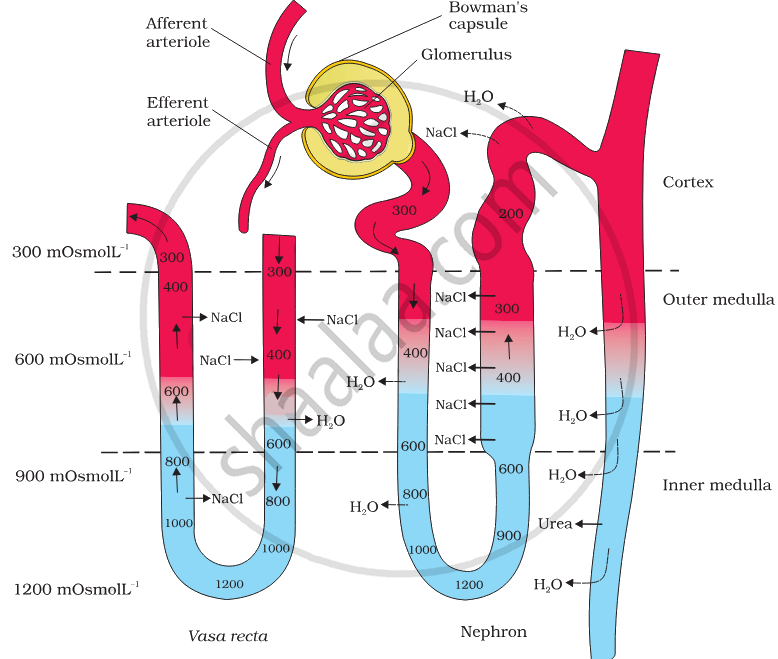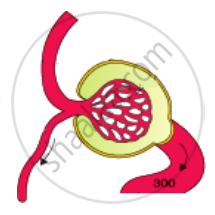Advertisements
Advertisements
Question
Give a brief account of the counter current mechanism.
Long Answer
Solution

- The countercurrent mechanism is a unique process used by the kidneys to concentrate urine. Because the outflow of Henle's loop (in the ascending limb) flows parallel to and in the opposite direction of the inflow (in the descending limb) and vasa recta, the mechanism is known as a countercurrent mechanism.
- The ascending limb of the loop of Henle actively carries sodium and chloride ions into the vasa recta, where they are secreted into the interstitial fluid, as the mechanism starts to work. Because of this, there is a lot of NaCl in the interstitial fluid surrounding the loop. The filtrate enters a collecting duct after exiting the ascending limb of the Henle loop.
- The collecting duct is located next to the Henle loop, where a significant concentration of NaCl is present in the interstitial fluid. Water diffuses out of the collecting duct in the interstitial fluid and eventually reaches the vasa recta's blood due to the high osmotic pressure that NaCl creates.
- Urine is now the filtrate after it has substantially concentrated. Between the blood travelling via the vasa recta and the interstitial fluid, a comparable countercurrent mechanism is at work. NaCl diffuses out of the blood as the blood capillary travels along the ascending limb of the Henle loop.
- As the blood capillary travels along Henle's descending limb, the direction is reversed. While the fluid travelling through the Henle loop moves in the opposite direction, blood flows in the vasa recta around the loop from the ascending to the descending side.
- The configuration aids in preserving the NaCL concentration gradient. Water diffuses out of the collecting ducts and concentrates the urine as a result of the countercurrent mechanism's overall goal of concentrating sodium chloride in the interstitial fluid.
shaalaa.com
Is there an error in this question or solution?
APPEARS IN
RELATED QUESTIONS
Which one of the following correctly explains the function of a specific part of a human nephron?
Counter current mechanism observed in the renal medulla helps in the formation of ______.
Name two actively transported substances in Glomerular filtrate.
Label the parts in the following diagram.
| Afferent arteriole Efferent arteriole Bowman’s capsule Glomerulus |
 |
Explain the mechanism of formation of concentrated urine in mammals.
Describe the structure of a human kidney with the help of a labelled diagram.
